Have you ever noticed bubbles or foam in your aquarium water and wondered if it’s safe for your fish? This phenomenon can occur for various reasons—some completely normal and harmless, while others signal underlying issues that need attention. Understanding these causes helps ensure a safe and healthy environment for your aquatic friends. Let’s dive into the eight common reasons why your aquarium water has bubbles and how you can address them effectively.
Why Does Aquarium Water Has Bubbles?
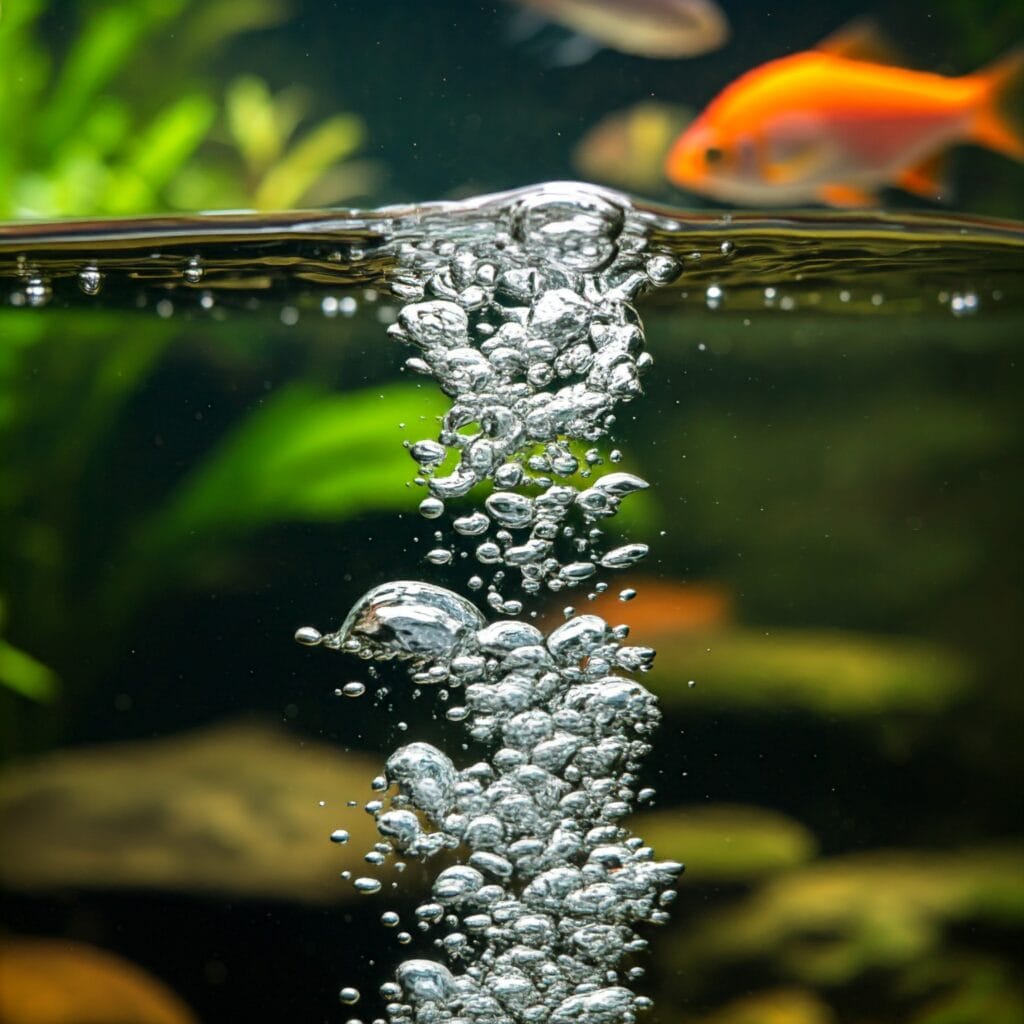
Bubbles in aquarium water can be fascinating and worrisome at the same time. They might appear after a water change, near a filter, or due to certain fish behaviors. While bubbles aren’t always a problem, they could indicate issues such as poor water quality or excess organic matter. Here are the primary reasons behind their occurrence:
1. Normal Bubbles from an Air Pump
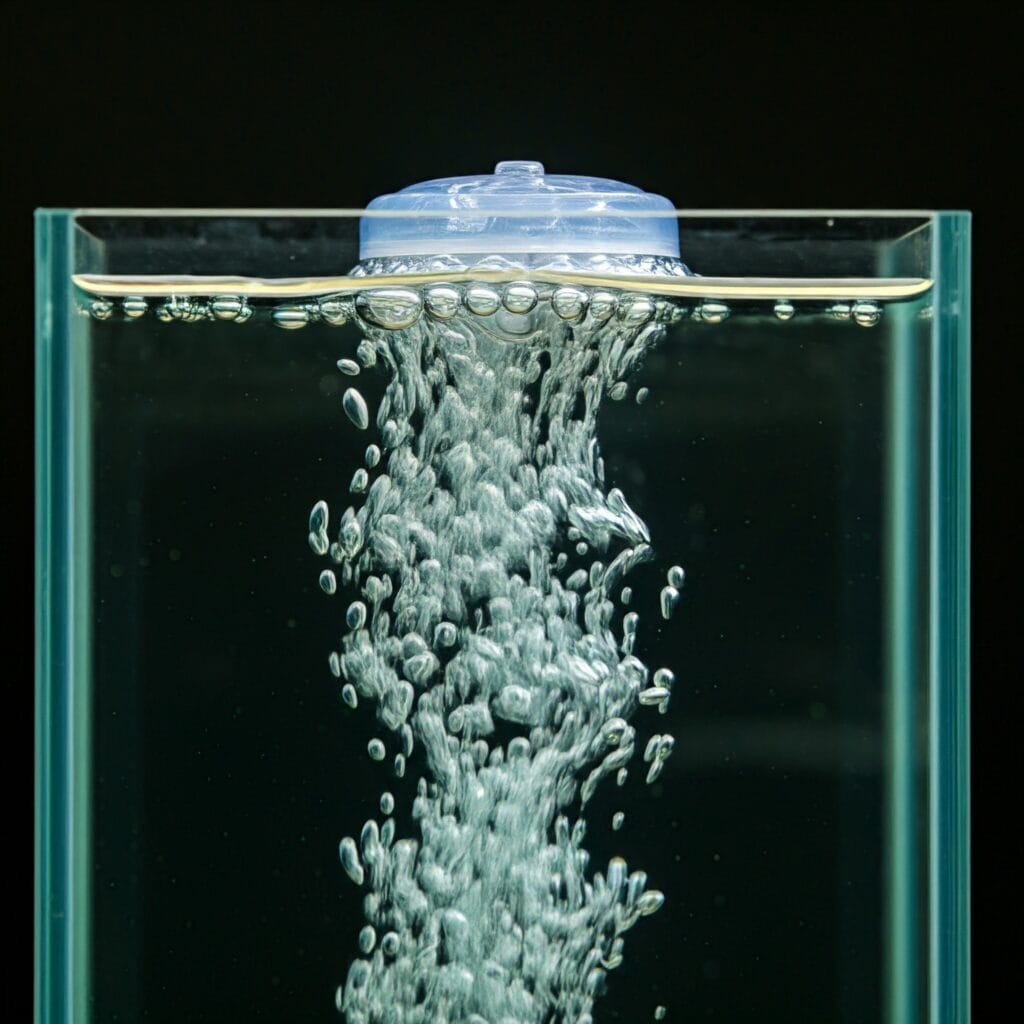
One of the most common causes of bubbles in an aquarium is the use of an air pump. Air pumps introduce air into the water, usually through an air stone, sponge filter, or bubbling decoration.
- How It Works:
The air pump draws air from outside and pushes it through airline tubing into the water. This creates a stream of bubbles that oxygenate the tank. - What to Watch For:
Normal bubbles are transparent and pop immediately at the surface. These are beneficial as they enhance oxygen levels, crucial for your fish’s health. - CO2 Injection Systems:
High-tech planted tanks using CO2 systems often have diffusers that break the gas into tiny bubbles to aid plant growth. These bubbles dissolve quickly and are a sign of a well-functioning setup.
Key Takeaway: Normal bubbles from air pumps or CO2 systems are harmless and indicate a properly functioning aquarium system.
2. Micro Bubbles After Water Changes
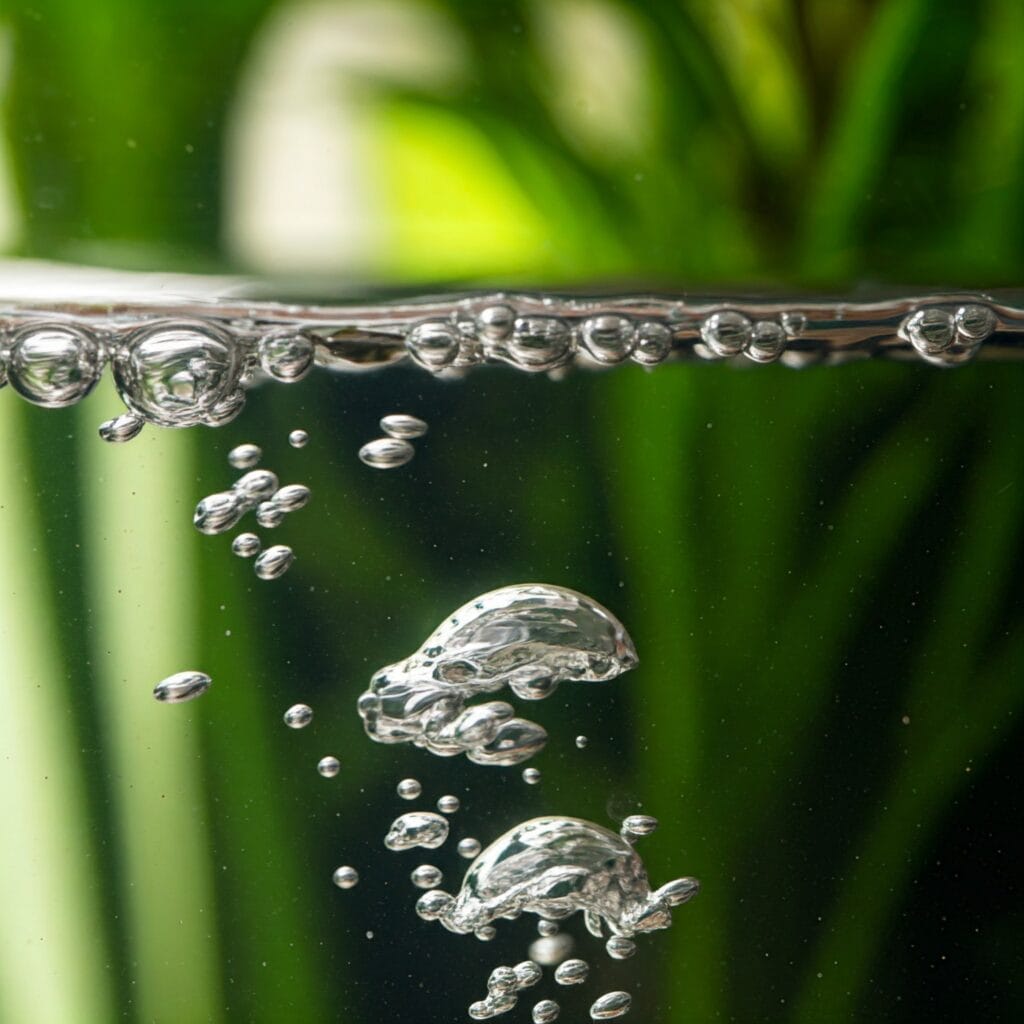
If you notice tiny bubbles clinging to the glass, decorations, or plants after a water change, there’s no need to panic.
- Why It Happens:
During colder months, water from underground pipes is significantly cooler. When it’s warmed up for your aquarium, dissolved gases escape, forming micro bubbles that adhere to surfaces. - How Long They Last:
These bubbles typically disappear within a few hours. However, an unusually high number of bubbles could mean you replaced a large volume of water or had a significant temperature difference.
Pro Tip:
Avoid sudden water parameter changes during a water change, as they can stress your fish.
3. Fish Medications or Chemicals

Certain treatments for fish diseases can alter water viscosity, leading to foam or persistent bubbles.
- Recognizing the Cause:
- Bubbles caused by medications are usually clear.
- If the bubbles have an oily or rainbow-like sheen, it might indicate contamination by soap or cleaning agents, which can be toxic to fish.
- How to Prevent Issues:
- Rinse aquarium equipment with clean water rather than soap.
- If disinfection is necessary, use diluted bleach, rinse thoroughly, and let items air dry before reintroducing them to the tank.
Key Tip: Always read medication instructions and monitor water quality during treatment.
4. Oil Slick on the Water Surface
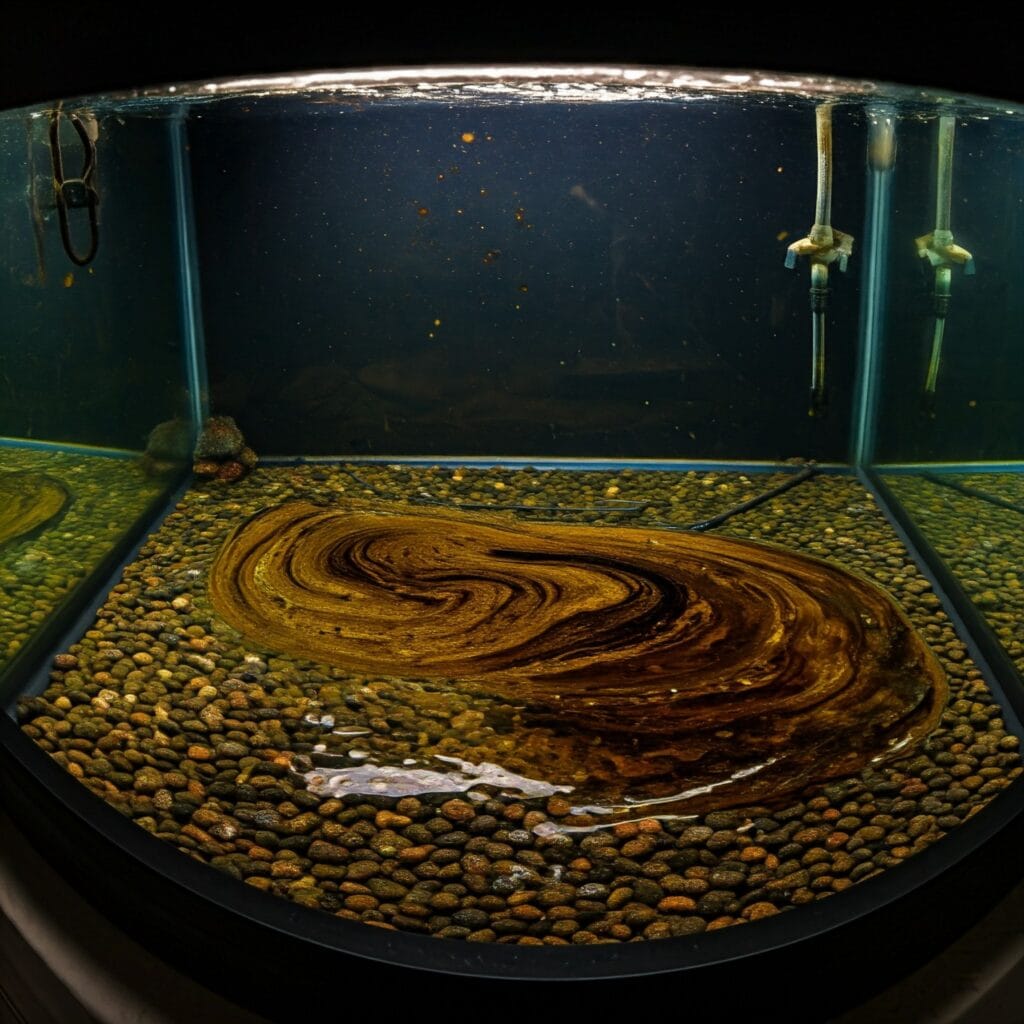
An oily film trapping bubbles on the water surface can be unsightly and indicate poor water conditions.
- Causes:
- Oils from fish food or your hands.
- Accumulation of organic matter in the tank.
- Solutions:
- Increase surface agitation using a sponge filter or direct your filter output toward the surface.
- Remove floating plants or debris hindering water movement.
- Perform regular water changes and reduce excess feeding.
| Problem | Cause | Solution |
|---|---|---|
| Oily film on surface | Organic matter buildup | Use a sponge filter for surface agitation |
| Persistent bubbles | Lack of water movement | Direct filter output toward the surface |
| Water appears stagnant | Floating plants blocking oxygen | Trim or remove overgrown plants |
5. Excess Ammonia

Foamy bubbles in your aquarium can sometimes be linked to high ammonia levels—a dangerous situation for your fish.
- What Causes It:
- Overfeeding, overstocking, or decaying organic matter.
- External debris like leaves falling into an outdoor pond.
- Signs to Look For:
Persistent foam near the surface, coupled with unhealthy fish behavior, such as gasping for air. - How to Address It:
- Test water using ammonia strips and perform water changes as needed.
- Ensure your tank’s filtration system is functioning efficiently.
Remember: Ammonia spikes can be deadly, so it’s crucial to maintain a regular tank maintenance schedule.
6. Bubble Nests
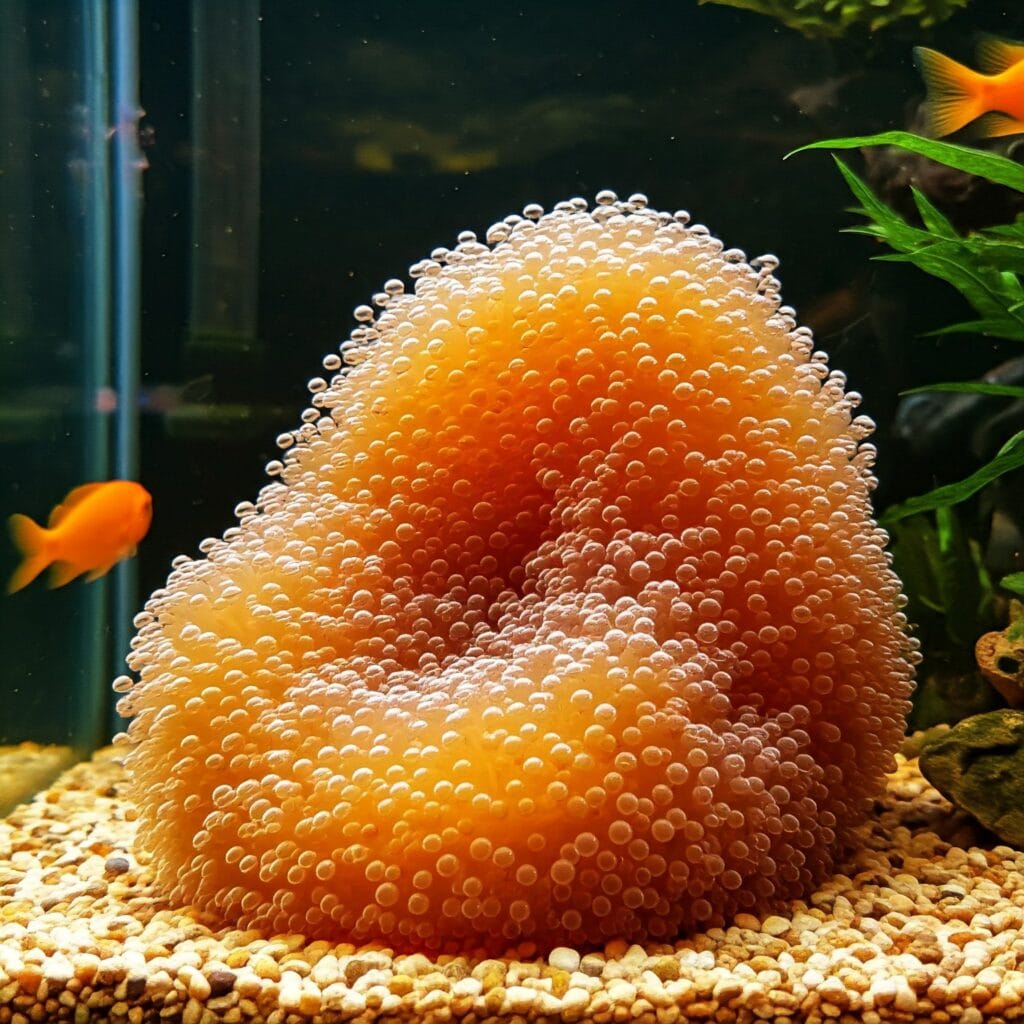
Not all bubbles are bad! Certain fish species, like bettas and gouramis, create bubble nests as part of their natural behavior.
- Why They Do It:
Male bubble nesters produce bubbles using their saliva during breeding. These nests float on the surface and serve as a protective space for eggs. - Where You’ll See Them:
- Near calm corners of the tank.
- Under floating plants or decorations.
Did You Know?
If you accidentally destroy a bubble nest during tank cleaning, don’t worry! Male fish will rebuild the nest quickly.
7. Pearling Plants
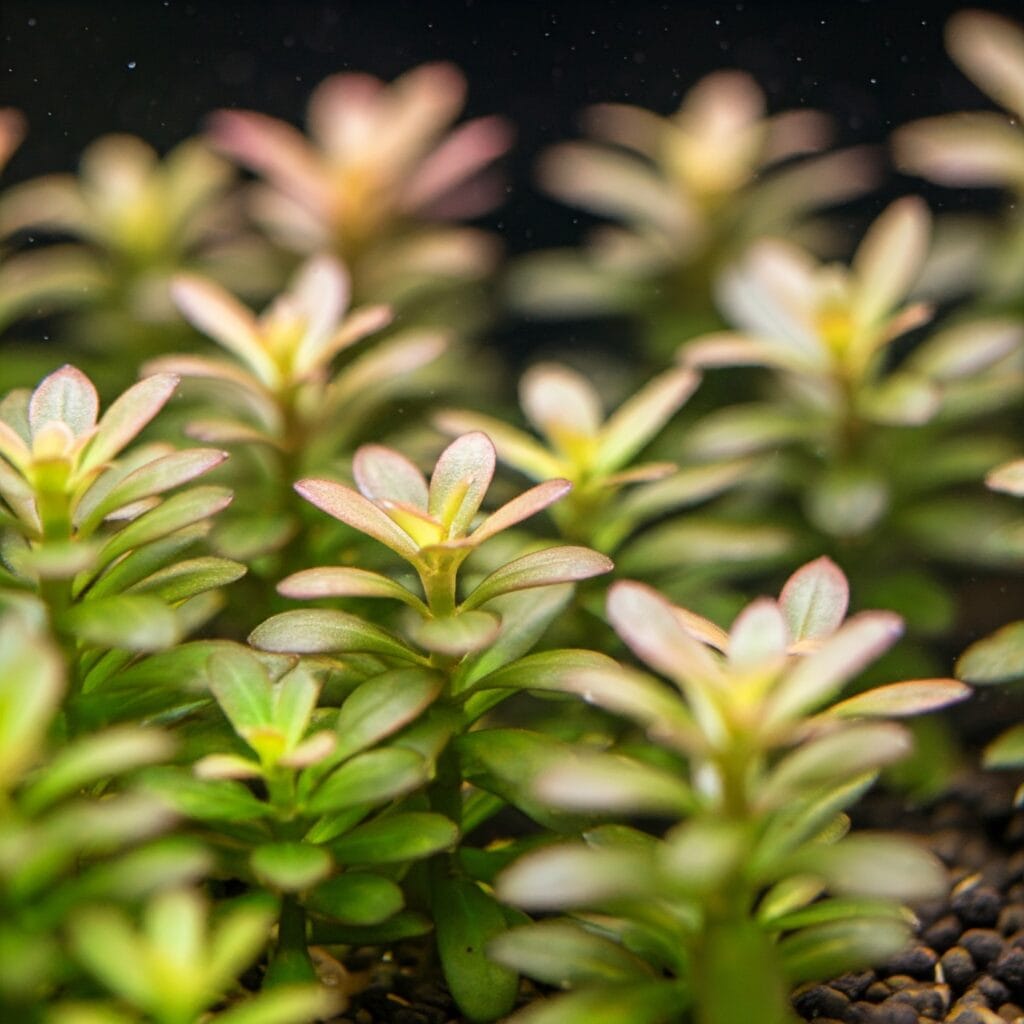
Plants in aquariums can create tiny oxygen bubbles during photosynthesis, especially in well-lit tanks with high oxygen saturation.
- What Is Pearling?
When plants absorb light, they produce oxygen. Excess oxygen forms visible bubbles on the leaves. - Additional Benefits:
Even algae, though unattractive, contribute to oxygenation and nitrogen waste absorption.
Pro Tip: If you notice pearling, it’s a sign of healthy plant growth and a well-balanced aquarium.
8. Protein Foam
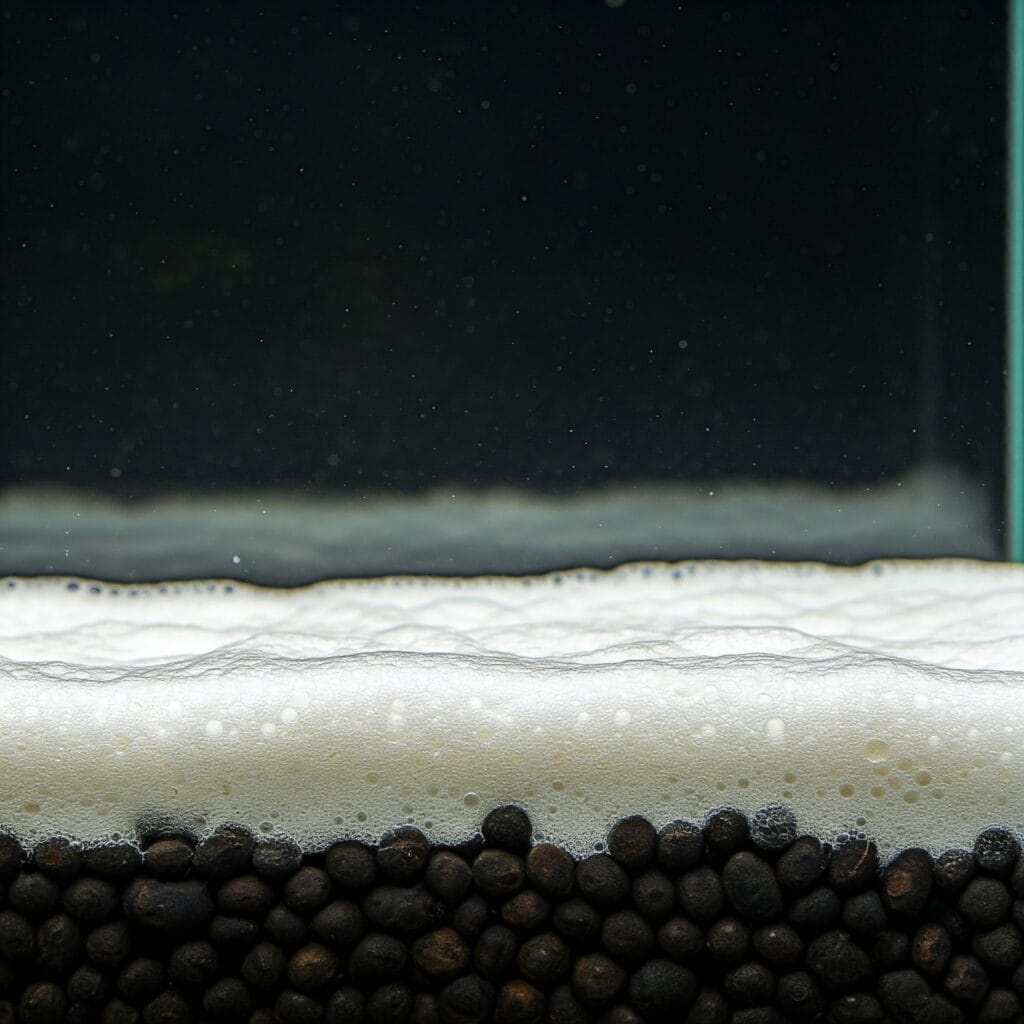
Protein foam often occurs when organic matter like leftover food, fish waste, or plant debris breaks down in the water.
- Signs of Protein Foam:
- Persistent, frothy bubbles that don’t pop easily.
- Accumulation near filters or at the water surface.
- How to Fix It:
- Remove uneaten food promptly.
- Perform water changes to reduce organic buildup.
- Use a protein skimmer if the issue persists.
Note: Protein foam is more common in saltwater tanks but can occasionally appear in freshwater setups.
FAQs About Aquarium Water Bubbles
1. Are bubbles in the aquarium harmful?
Not all bubbles are harmful. While normal bubbles from air pumps or plants are safe, persistent foaming might indicate issues like excess ammonia or poor water conditions.
2. How can I reduce bubbles in my tank?
Identify the cause of the bubbles. Adjust the water agitation, clean the tank, or test for ammonia levels if needed.
3. Should I remove the bubble nest created by my betta fish?
No, bubble nests are natural and indicate healthy behavior. Let your betta manage the nest.
4. How often should I clean my tank to prevent bubbles?
Perform weekly water changes of 10–20% and monitor for organic buildup to keep your aquarium clean.
